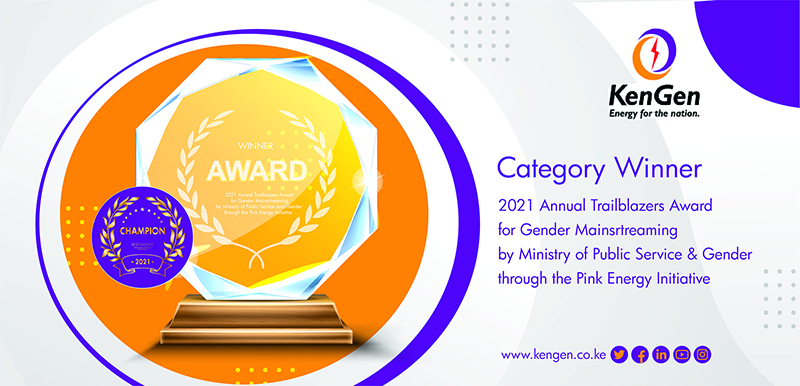Stable Water Levels at Masinga Offer Relief to Power Consumers, Even as Shift to Geothermal Gains Urgency
Nairobi, Wednesday, May 28, 2025: Kenya’s largest hydroelectric reservoir, Masinga Dam, has defied mounting climate pressures to maintain stable water levels this week, offering relief to cushion Kenyans from unpredictable rainfall patterns.
The high levels of water are a welcome development at a time when climate change continues to affect Hydroelectric Power (HEP) production putting energy planners under growing pressure to diversify the country’s power sources.
Fresh data from the NSE-listed Kenya Electricity Generating Company (KenGen) shows Masinga holding at 1,056.97 meters above sea level (m.a.s.l.), surpassing the maximum level of 1,056.50. This is a big boost to Kenya’s electricity grid, as Masinga dam anchors the Seven Forks cascade which is a system of five interlinked hydro stations that collectively powers a significant share of the nation’s economy.
At the same time, the broader hydro network remains under tight watch. KenGen said its Kamburu, Gitaru, Kindaruma, Kiambere, Turkwel, Sondu, and Sang’oro power stations continue to hold strong operating at maximum water levels.
Hydroelectricity is Kenya’s cheapest and most established source of power, but it is also the most vulnerable to shifting rainfall patterns. With droughts in recent years cutting deep into production, the country’s reliance on water-fed dams is being re-evaluated.
“This kind of stability at Masinga and the other hydro power stations is welcome, but it is no longer something we can take for granted,” said Eng. Peter Njenga, KenGen’s Managing Director and CEO. “We are operating in a new reality, and that’s why we are investing heavily in geothermal to shield Kenyans from the vagaries of rain-fed power production.”
Geothermal energy, tapped from deep beneath Kenya’s volcanically active Rift Valley, today accounts for more than 42% of the country’s daily power consumption. Unlike hydropower, it is impervious to weather, giving it a critical edge in times of drought. For planners, it has become the cornerstone of Kenya’s long-term energy resilience strategy.
According to latest data from the Energy and Petroleum Regulatory Authority, geothermal accounts for more than 42% of Kenya’s daily energy consumption with KenGen contributing over 33% from its geothermal power plants in Olkaria.
In a proactive move to make Kenya energy secure, the government is currently fast-tracking geothermal expansion projects in Olkaria, Menengai, and other geothermal-active sites with an eye on both domestic stability and regional exports under the Eastern Africa Power Pool.
At the same time, KenGen says it has rolled out new real-time monitoring systems across its dams to ensure efficient water use and early warning for potential risks.
As Kenya walks a tightrope between climate vulnerability and energy demand, this week’s Masinga figures offer hope, but also a warning. The future of power in Africa’s most ambitious green economy will not rest on one dam alone, but on how fast Kenya can pivot to climate-smart solutions.
Ends…/
About KenGen
Kenya Electricity Generating Company PLC - KenGen is the leading electricity generation company in the Eastern Africa region, with an installed generation capacity market share of more than 60%. The company’s primary business is to provide safe, reliable, and competitively priced electric energy for the country in an environmentally friendly and sustainable manner while creating value for its stakeholders.
Today, KenGen PLC has an installed generation capacity of 1,785MW, of which over 93% is drawn from green sources, namely Hydro (826MW), Geothermal (754MW), and Wind (25.5MW). The balance is from Thermal.
For media queries, please contact: Manager, Marketing and Corporate Communication at KenGen, Frank D. Ochieng, Tel:0721816896 Email: This email address is being protected from spambots. You need JavaScript enabled to view it. or This email address is being protected from spambots. You need JavaScript enabled to view it.





